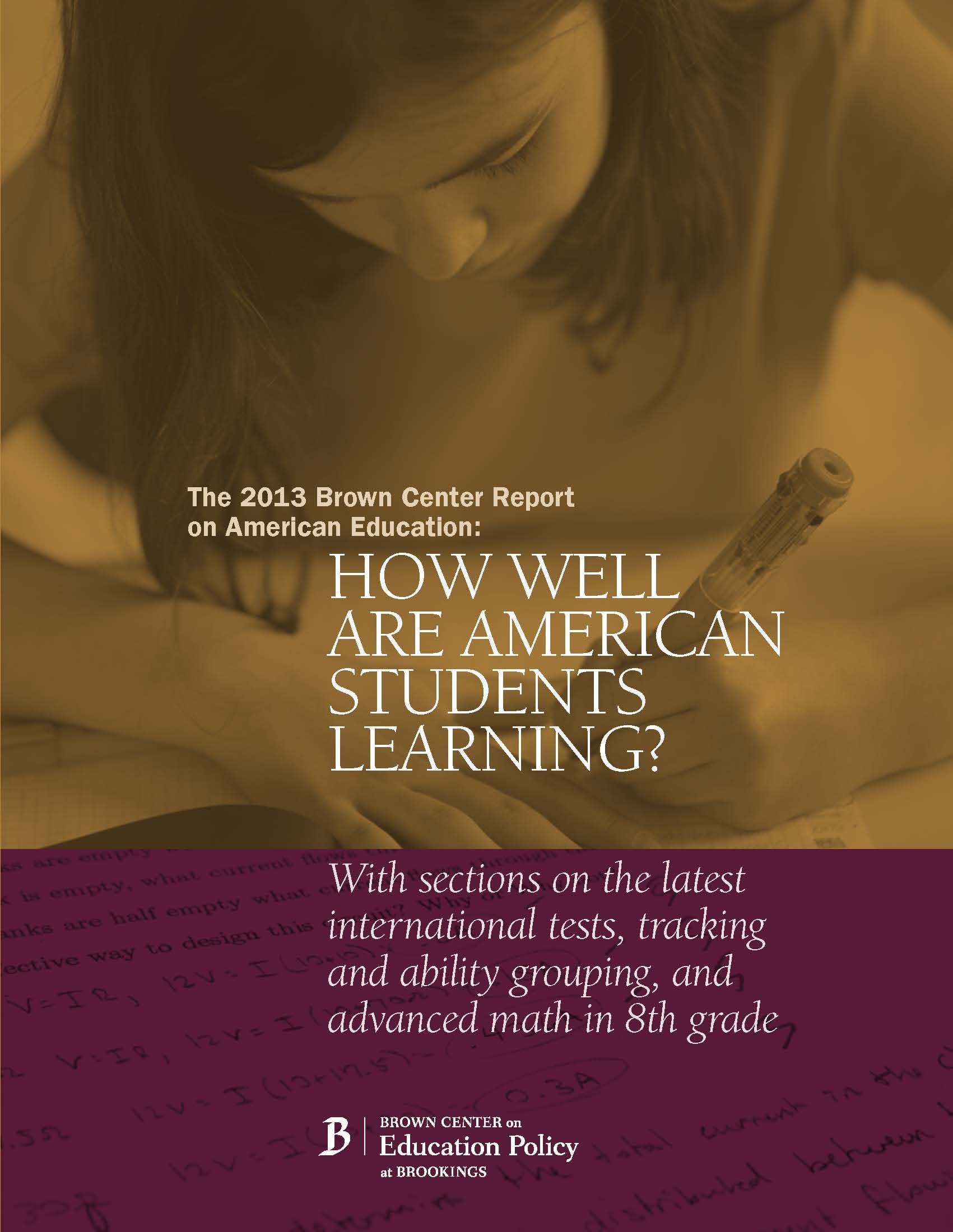 The Brown Center’s annual report always takes on three big issues in education policy—and always delivers the goods. Thank you, Brookings! This year’s edition is no exception, broaching the topics of ability grouping in elementary schools (which it finds is on the rise), whether teaching Algebra in eighth grade improves NAEP math scores (it doesn’t), and how American students compare with their international peers (one of report author Tom Loveless's favorite topics). In service of the latter, the report firmly discredits the notion that the U.S. must copy and paste the instructional practices of so-called “A+ countries” (the six that scored at the top of the TIMSS charts in 1995). Rather, since 1995, the U.S. has gained seventeen points in eighth-grade mathematics—an achievement exceeded by only one A+ nation, Korea, and matched by one other, Hong Kong. Moreover, though Finland’s PISA scores have earned them near-worship in many U.S. education circles, that country’s performance on the TIMSS was statistically indistinguishable from ours. Be sure to read Kathleen Porter-Magee’s nuanced perspective on the “Finnish miracle” for real lessons we can learn from our friends across the pond.
The Brown Center’s annual report always takes on three big issues in education policy—and always delivers the goods. Thank you, Brookings! This year’s edition is no exception, broaching the topics of ability grouping in elementary schools (which it finds is on the rise), whether teaching Algebra in eighth grade improves NAEP math scores (it doesn’t), and how American students compare with their international peers (one of report author Tom Loveless's favorite topics). In service of the latter, the report firmly discredits the notion that the U.S. must copy and paste the instructional practices of so-called “A+ countries” (the six that scored at the top of the TIMSS charts in 1995). Rather, since 1995, the U.S. has gained seventeen points in eighth-grade mathematics—an achievement exceeded by only one A+ nation, Korea, and matched by one other, Hong Kong. Moreover, though Finland’s PISA scores have earned them near-worship in many U.S. education circles, that country’s performance on the TIMSS was statistically indistinguishable from ours. Be sure to read Kathleen Porter-Magee’s nuanced perspective on the “Finnish miracle” for real lessons we can learn from our friends across the pond.
SOURCE: Tom Loveless, The 2013 Brown Center Report on American Education: How Well Are American Students Learning? (Washington, DC: Brookings Institution, March 2013).
